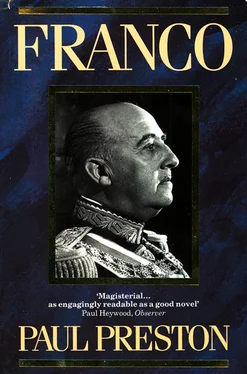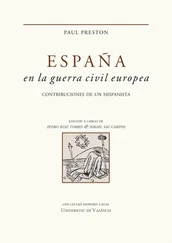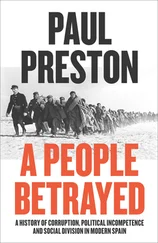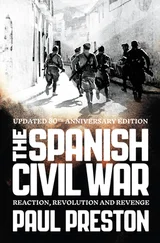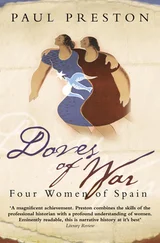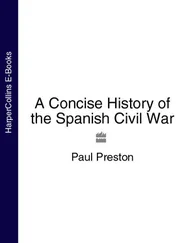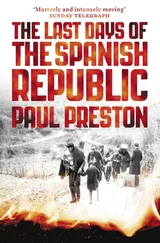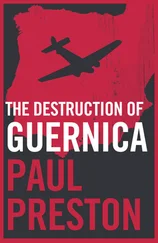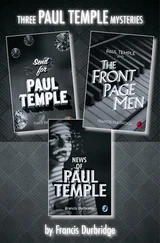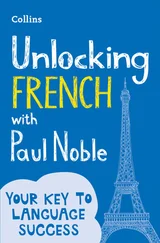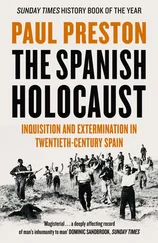Paul Preston - Franco
Здесь есть возможность читать онлайн «Paul Preston - Franco» — ознакомительный отрывок электронной книги совершенно бесплатно, а после прочтения отрывка купить полную версию. В некоторых случаях можно слушать аудио, скачать через торрент в формате fb2 и присутствует краткое содержание. Жанр: unrecognised, на английском языке. Описание произведения, (предисловие) а так же отзывы посетителей доступны на портале библиотеки ЛибКат.
- Название:Franco
- Автор:
- Жанр:
- Год:неизвестен
- ISBN:нет данных
- Рейтинг книги:5 / 5. Голосов: 1
-
Избранное:Добавить в избранное
- Отзывы:
-
Ваша оценка:
- 100
- 1
- 2
- 3
- 4
- 5
Franco: краткое содержание, описание и аннотация
Предлагаем к чтению аннотацию, описание, краткое содержание или предисловие (зависит от того, что написал сам автор книги «Franco»). Если вы не нашли необходимую информацию о книге — напишите в комментариях, мы постараемся отыскать её.
Franco — читать онлайн ознакомительный отрывок
Ниже представлен текст книги, разбитый по страницам. Система сохранения места последней прочитанной страницы, позволяет с удобством читать онлайн бесплатно книгу «Franco», без необходимости каждый раз заново искать на чём Вы остановились. Поставьте закладку, и сможете в любой момент перейти на страницу, на которой закончили чтение.
Интервал:
Закладка:
* It was said that religious ceremonial bored Franco almost more than anything else and, in power, he suffered agonies when he had to receive religious delegations, commenting ‘we’re doing saints today’ (‘ boy estamos de santos ’).
* Several prominent Nationalists crossed the lines in these ways. The exchanges ( canjes ) included important Falangists like Raimundo Fernández Cuesta who was officially exchanged for a minor Republican figure, Justino de Azcárate, and Miguel Primo de Rivera who was exchanged for the son of General Miaja. Among the more significant escapees was Ramón Serrano Suñer.
VIII
FRANCO AND THE SIEGE OF MADRID
October 1936–February 1937
IRONICALLY, Franco had hoped, by the day on which the disagreeable incident between Millán and Unamuno had taken place, to have been celebrating the capture of Madrid. There had been a significant slowing down of the rhythm of operations during the two weeks in which he was otherwise occupied clinching his elevation to power. The war could not be delayed indefinitely and, on 6 October, Franco announced to journalists that his offensive against the capital was about to begin. Under the overall direction of Mola, the Nationalist forces began a co-ordinated push against Madrid on the following day. An extremely tired Army of Africa resumed its northward march under the command of General Varela, assisted by Colonel Yagüe as his second-in-command. 1 The ten thousand-strong force was organized in five columns under Asensio, Barrón, Castejón, Colonel Francisco Delgado Serrano and Tella. Supplies of arms had been collected and they were augmented by the arrival of substantial quantities of Italian artillery and light tanks. Italian instructors quickly trained Spaniards in their use and, on 18 October, Franco, accompanied by the Italian military mission, was able to inspect the first Italo-Spanish motorised armoured units. 2
After frequent consultations with Franco, Mola developed a two-part final strategy to take Madrid which was already surrounded on the west from due north to due south. The idea was first for the Nationalist forces to march on Madrid, simultaneously reducing the length of the front and tightening their grip on the capital, and then for Varela’s Army of Africa to make a frontal assault through the northern suburbs. The push which began on 7 October saw an advance from Navalperal in the north, near El Escorial, Cebreros to the west and Toledo in the south. The forward defences of the city were demoralised by Nationalist bombing and then brushed aside by motorised columns armed with fast Italian whippet tanks. Desperate counter-attacks from the capital were easily repelled, thereby intensifying the optimism of the attacking forces. 3
However, a different kind of war was about to begin. From 18 July until 7 October, the brunt of the Nationalist effort had been borne by the Army of Africa, on a forced march, frontally attacking towns and villages and opposed only by untrained amateur militiamen. It was little different from the kind of colonial war in which Franco and the other Africanistas had received their early military experiences. In this type of warfare, the advantage was entirely with the Legion and the Regulares. Henceforth, there was to be a move towards a war of fronts. Paradoxically, as the Germans, Italians and Russians poured in material assistance in the form of the latest weaponry, in part at least by way of experiment for the next war, Franco would remain fixed in the strategic world of the Great War.
More than with the attack on Madrid, the Generalísimo was occupied with the operation to break the siege of Oviedo and the city’s liberation on 17 October gave him enormous pleasure. He seems to have taken less direct interest in the campaign for Madrid. It was not until 20 October, considerably after the diversion of the Army of Africa to Toledo, that he seemed to wake up to the extent to which the capital was being strengthened and issued the order to ‘concentrate maximum attention and available combat forces on the fronts around Madrid’. 4 Indeed, his absence from the operations to take Madrid, and from the subsequent Nationalist chronicles thereof, was quite remarkable. Perhaps Franco suspected that there was little easy glory to be won and thus slyly left Mola to take responsibility.
Mola himself was happy to seize the opportunity to make good his failure to capture Madrid at the beginning of the war. 5 His optimism was widely shared: a Nationalist alcalde (mayor) and city councillors had already been named. 6 Nationalist radio stations broadcast the news that Mola was preparing to enter the Puerta del Sol in the centre of Madrid on a white horse. He even offered to meet the Daily Express correspondent there for a coffee and Republican wags set up a table to await him. 7 Nationalist aircraft showered Madrid with leaflets containing an ultimatum for the evacuation of the civilian population and total surrender. The situation was deteriorating so rapidly that there seemed little hope. 8 Then on 15 October, the first arms and equipment from the Soviet Union began to be unloaded at Cartagena. Once the fifty tanks, twenty armoured cars and 108 fighter aircraft were assembled and transported to the Madrid front, giving the Republic a brief parity of force, there would be no quick victory for the Nationalists. 9
By the end of the month, Mola’s forces had taken a ring of small towns and villages near the capital, including Brunete, Móstoles, Fuenlabrada, Villaviciosa de Odón, Alcorcón and Getafe. Madrid was inundated with refugees from the surrounding villages along with their sheep and other farm animals. 10 There were major problems of food and water distribution. Harassed by Nationalist aircraft, the militia columns were also falling back along the roads to Madrid in considerable disarray. On 31 October, with twenty-five thousand Nationalist troops under Varela about to reach the western and southern suburbs of Madrid, Mola issued a warning about the dangers of further delay. 11
However, from 1 to 6 November, there was a serious slowing-down of the advance, usually attributed to the Nationalists’ need to rest their troops and their confidence that they had time to do so. However, it has been alleged that the hesitation was in part caused by Franco making long consultations with his German and Italian advisers. 12 It would also appear that between 4 and 6 November, an acrimonious debate took place within the Nationalist camp as to how to go about seizing the capital. Yagüe and Varela proposed daring blitzkrieg attacks through the suburbs, while Mola called for a broad frontal assault in the belief that Madrid would offer no more resistance than Toledo. * A cautious Franco rejected the plans of Yagüe and Varela for fear of losing the crack African columns. 13
Franco thus left Mola free to push his own over-optimistic strategy of a full-scale assault from the west across the River Manzanares and through the University City and the Casa del Campo, the old royal hunting ground of sparsely wooded scrub. By 7 November, the Nationalists were ready to begin what they assumed would be their final frontal assault. 14 On 28 October, the Falange and the Carlists drew up lists of the buildings, hotels, cinemas, theatres, radio stations and newspapers that they planned to occupy after the victory. 15 Civilian rightists who followed in the wake of the Army of Africa had packed their suitcases in anticipation of an early return to their homes in Madrid’s better neighbourhoods. It was believed in the Francoist camp that, within hours, Legionarios would be in the Puerta del Sol. 16
However, the news of the arrival of Russian weaponry and technicians along with the first 1,900 men of the International Brigades diminished the optimism at the Generalísimo’s headquarters. Heavy Russian tanks were put into action from the end of October to blunt the advance of the fast-moving Nationalist columns, although the lack of skilled drivers and gunners dramatically diminished their efficacy. Soviet I-15 and I-16 fighter aircraft piloted by Russian airmen went into action for the first time on 4 November and would, for about six months at least, reverse the easy air superiority enjoyed by the Nationalists during the drive on Madrid. 17 Without knowing fully the scale of the Russian aid to the Republic, the Germans were already becoming frustrated with the slowness of Franco’s progress towards Madrid.
Читать дальшеИнтервал:
Закладка:
Похожие книги на «Franco»
Представляем Вашему вниманию похожие книги на «Franco» списком для выбора. Мы отобрали схожую по названию и смыслу литературу в надежде предоставить читателям больше вариантов отыскать новые, интересные, ещё непрочитанные произведения.
Обсуждение, отзывы о книге «Franco» и просто собственные мнения читателей. Оставьте ваши комментарии, напишите, что Вы думаете о произведении, его смысле или главных героях. Укажите что конкретно понравилось, а что нет, и почему Вы так считаете.
